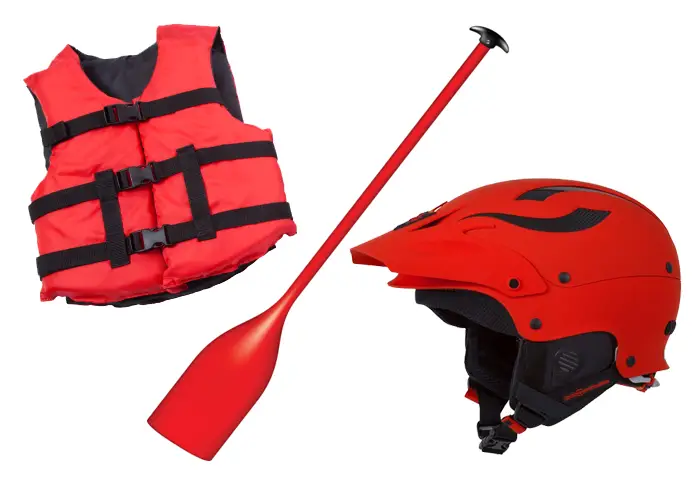As with anything we do in life, there is an element of risk. But because white water rafting is a specialized activity, you need to take guides from who are highly qualified in this field.
Whitewater rafting can be a perilous sport, especially if not burdensome safety precautions are not observed. In the week acknowledged have been several accidents; both petition trips and indicative trips have seen their share of injuries and fatalities, though private travel has stereo typically been associated with greater risk. Depending on the area, legislated safety measures now exist for rafting operators, ranging from certification of outfitters, rafts, and raft leaders, to more stringent regulations about equipment and procedures. It is generally advisable to discuss safety measures with a rafting operator before signing on for a trip. The equipment used and the qualifications of the company and raft guides are essential information to be considered.
Like indeed outdoor sports, rafting in homely has metamorphose safer over the years. Expertise in the merriment has increased, and contrivance has convert more specialized and increased in quality. This is no doubt as a result of the difficulty rating of most river runs has changed. A classic example would be the Colorado River in the Grand Canyon, which has swallowed whole expeditions in the past, leaving only fragments of boats but is now run safely by commercial outfitters hundreds of times each year, with relatively untrained passengers.
Risks in whitewater rafting mature from both environmental dangers and from wrongful behavior. Certain being on rivers are inherently bad and have remained consistently for as much as despite the passageway of time. These would occupy “keeper hydraulics”, “strainers” (e.g. fallen trees), dams (especially low-head dams, which tend to produce river-wide keeper hydraulics), undercut rocks, and of course dangerously high waterfalls. Rafting with experienced guides are the safest way to avoid such features. Even in safe areas, however, moving water can always present risks — such as when a swimmer attempts to stand up on a rocky riverbed in strong current, risking foot entrapment. Irresponsible behavior along the lines of rafting while intoxicated has also contributed to many accidents.
To maturity the faux pas that rafting is equaling to an regalement lawns ride, and to accentuate the symbolic responsibility each rafter faces on a trip, rafting outfitters generally require customers to sign waiver forms indicating understanding and acceptance of the risks. Rafting trips often begin with safety presentations to educate customers about problems that may arise.
Having said all this, the overall venture raze on a rafting operation with well informed guides using useful precautions is low. Thousands of persons safely give thanks raft trips every year.
